Magnificent and eye-catching 1955 Fordson E83W Pick-up
Posted by Chris Graham on 24th January 2024
Mike Neale tells the story of an eye-catching 1955 Fordson E83W Pick-up that’s owned and cherished by London-based enthusiast, John Vyse.
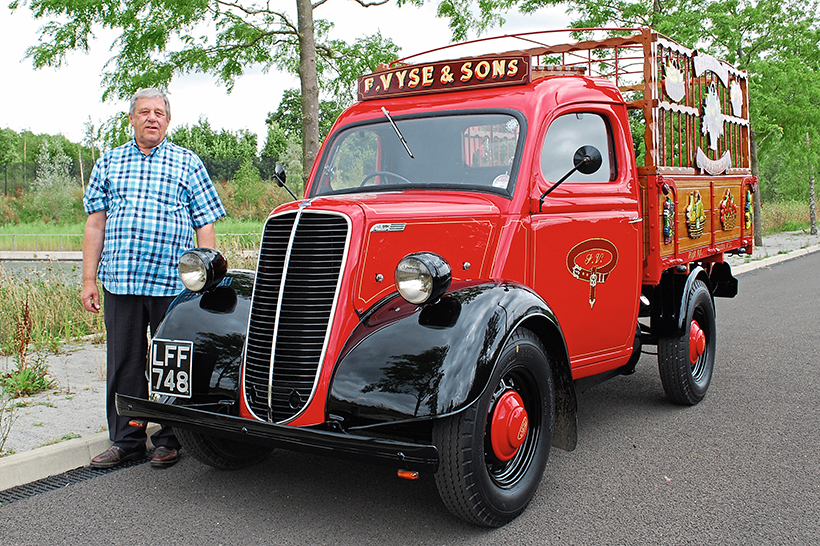
John Vyse and his superbly-restored, 1955 Fordson E83W pick-up.
Ford introduced its new 10cwt commercial in March 1938, the Fordson E83W. In Ford code, ‘E’ signified England,’8′ denoted 1938, ‘3’ indicated a 10hp four-cylinder engine, and ‘W’ meant forward-control commercial.
The E83W was a good-looking vehicle which, in truth, could perhaps better be described as semi-forward control as, although the driver sat beside the engine rather than behind it (which would be the case with normal control), the E83W did have a short protruding bonnet.
The Fordson name was first used on a Dagenham-built commercial in 1932, on the Model BB 2-ton truck, with the brand being adopted for all Ford’s British commercial vehicles by 1935.

As bought; it wasn’t too bad overall, but the body had been built using inappropriate softwood and needed renewing.
In 1937, the Dagenham-designed Fordson 7V forward-control, two-ton truck was launched. The grille of this pre-war 7V was used on the 10cwt E83W throughout its production run, although the 7V itself received a flatter, plainer, more utilitarian grille for military versions from 1941, which it kept when civilian production recommenced after the war. The E83W’s headlamps were, in turn, sourced from the Fordson E27N tractor.
The E83W was fitted with the 1,172cc side-valve engine from the contemporary Ford 7Y Ten and Ford Prefect E93A, originally used in the 1934 Ford Model C, although the E83W was lower-geared than its saloon car siblings, and performance could emphatically not be described as spritely. The three-speed gearbox had synchromesh on second and top. The dynamo was mounted on the cylinder head.
The engine was slightly offset towards the nearside to allow space for the pedals on the driver’s side. As no passenger seat was usually fitted, the lack of legroom on the nearside of the cab wasn’t really an issue! The offset engine position could be noted from outside, as there was an off-centre hole in the grille for the starting handle and, on post-war versions, two off-centre holes to suit either right- or left-hand drive vehicles.
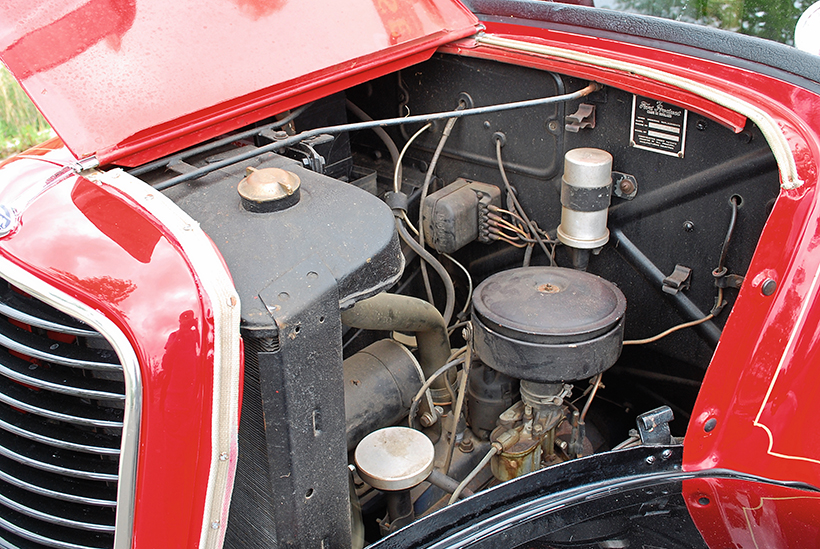
The 1,172cc side-valve engine is the original unit.
No body panels were shared with the cars, with the E83W being a taller vehicle than the contemporary Ford saloons. The wheelbase was 7ft 6in with a load space inside the van that was 6’8” long, providing a capacity of 110cu.ft. The overall length was 13ft 1½in, width 5ft 4in and height 6ft 1½in.
There was transverse leaf spring suspension to both front and rear, and hydraulic lever-type shock absorbers. It had a three-quarter floating-type rear axle, with an offset torque tube drive to a spiral bevel final drive. Eleven-inch diameter cable-operated drum brakes operated on all four wheels and 6V electrics were the order of the day.
Initially, 18in Easiclean wheels were fitted to vans and 16in versions to the pick-up trucks, with 16in wheels becoming an option on vans from 1950. There was an opening windscreen and a single, roof-mounted vacuum-operated wiper was fitted.
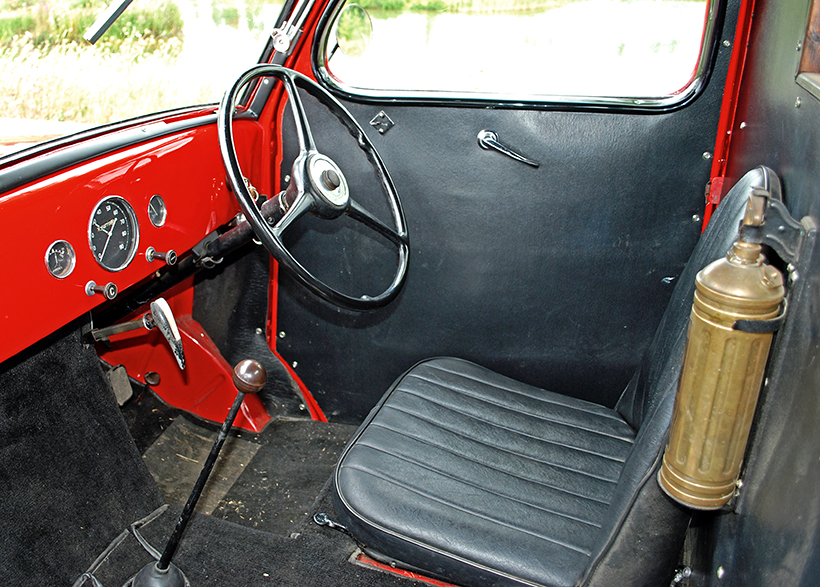
Cabs don’t really get much more basic than this!
The E83W was available from Ford as a panel van with a body by Briggs Motor Bodies in composite timber and steel sheet with a fabric-covered roof panel. It was also sold as a steel-bodied pick-up, as a chassis-cab or chassis-cowl only, to allow coach-built bodywork such as laundry vans or wooden-backed pick-ups by firms such as Sully, Blackford & Hawkey Ltd from Leyton in East London, and as a Utilecon or small minibus converted by Ford-approved firm Martin Walter of Folkestone, in Kent.
It was also sold in Australia where they generally called it the Ten-Ten, because of its 10hp engine and 10cwt payload, initially with the same Ford code as in the UK, ‘E83W’ being used before the war, ‘E03W’ during the war and ‘A53W’ after.
The E83W changed very little throughout its 19½ year production run, which came to an end in September 1957, with almost 190,000 built.
The earliest versions had a central throttle pedal to catch out the unwary. Smaller headlamps were fitted from 1942. The shape of the rear wings (on vans) was altered in 1946, with a rear extension added to stop dirt splashing up onto the rear bodywork, and winding side windows were replaced by ones with simple window lifts fitted to the glass. In 1947 the right-hand floor-mounted pull-up handbrake was replaced by a pistol grip-type, dash-mounted handbrake. In 1948, the door handles changed from straight to curved with grooves.
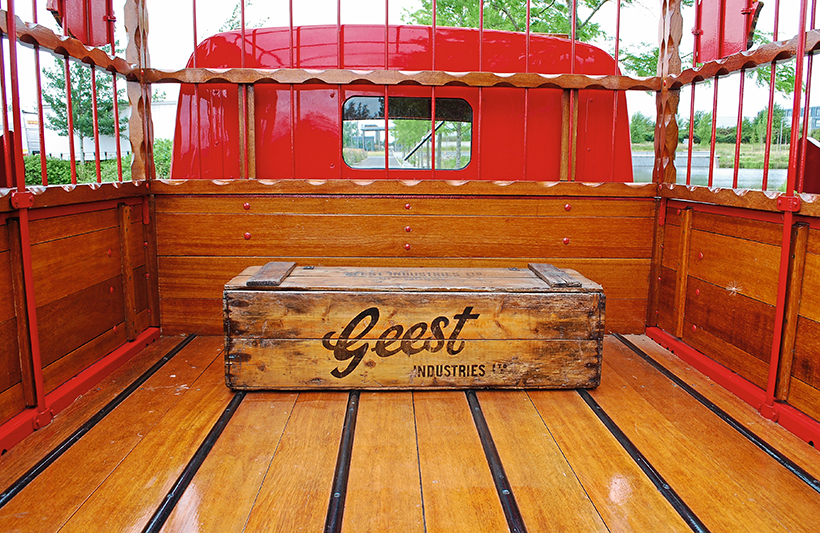
Refurbished loadbed. Genuine Geest banana box makes a good finishing touch.
From about 1950, the E83W was rebranded as Thames, with the blue Fordson badge above the grille then being replaced by a blue Thames badge and a side-flash was added to the side of the bonnet proclaiming ‘A Ford Product Made in England’. Twin rear lights were fitted to the van from September 1954 instead of the previous single, central light.
Family pick-up recreated
The 1955 Fordson E83W wooden-backed pick-up you see here is owned by John Vyse from North London. It would have been supplied as a chassis cab for the wooden body to be added.
He purchased the pick-up in 2016 to turn it into a recreation of the E83W truck that was used for his family fruit stall in Wood Green High Road during the 1960s, which was bought when they stopped using horse-drawn trolleys. In fact, John still has one of the original horse carts from the market stall.
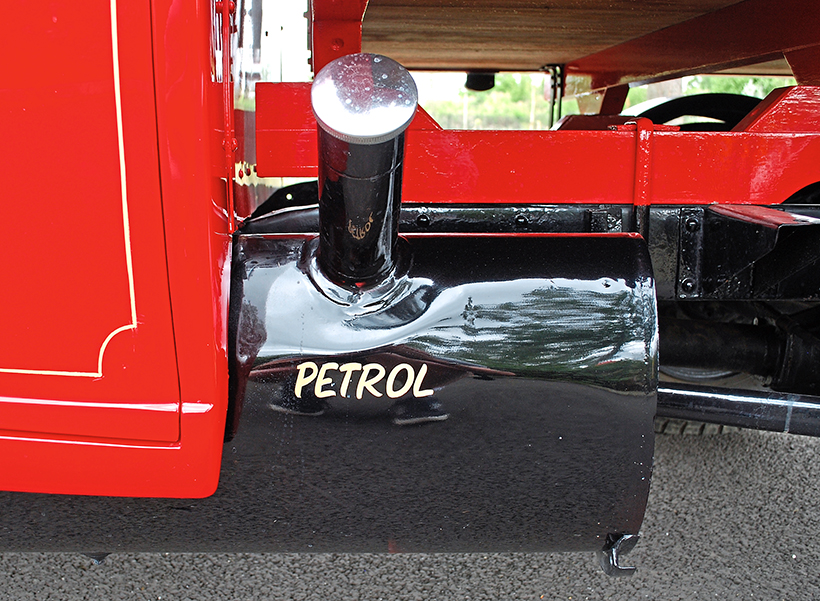
Just in case you forget which fuel to use…
The truck has been repainted into exactly the same colours as his dad’s was then. Amazingly, the fruit stall celebrated its 100th anniversary in 2019 and, while John has now retired, his brother is still running the stall.
John travelled up to Yorkshire to buy the truck. The original owner, back in 1955, is believed to have been a stonemason.
As bought, it didn’t look too bad, but John decided to strip it all down and repaint it. “I don’t believe in cutting corners or sparing the money that’s needed for a restoration,” explains John. “The painting was done by a chap who normally paints Rolls-Royces and Ferraris.”
John is a member of the Ford Sidevalve Owners Club, which he finds very useful for spare parts.
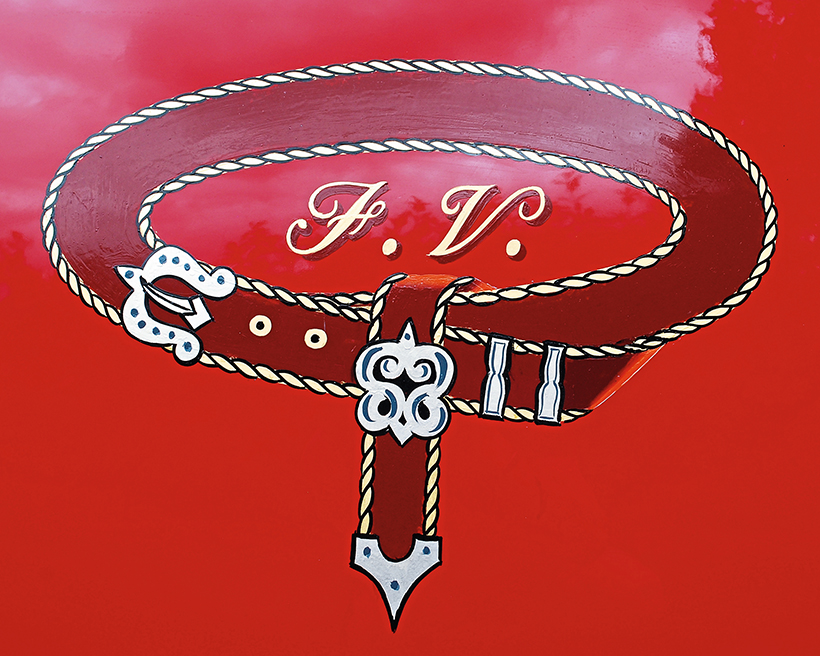
Sign-writing was by Dave Peacock who, as well as being superb with a paintbrush, was once the Dave in Chas n Dave!
The truck had a wooden body on it, but this was made of softwood which had deteriorated. John has now fitted a replacement hardwood body, which it would have originally had.
John tried to retain as much of the original as possible. The E83W still has its original 1,172cc engine, and it’s covered just 34,000 miles from new. The headlights and bumpers were retained, although he had to pull a dent out of the bumper. The front wings were panel-beaten out to remove dents to get them smooth without using filler, but John plans to change the rear wings as these aren’t original and would have had more of a flare on them at the rear.
The chrome Ford badges on the side of the bonnet are replacements. John didn’t need to replace the wiring though.
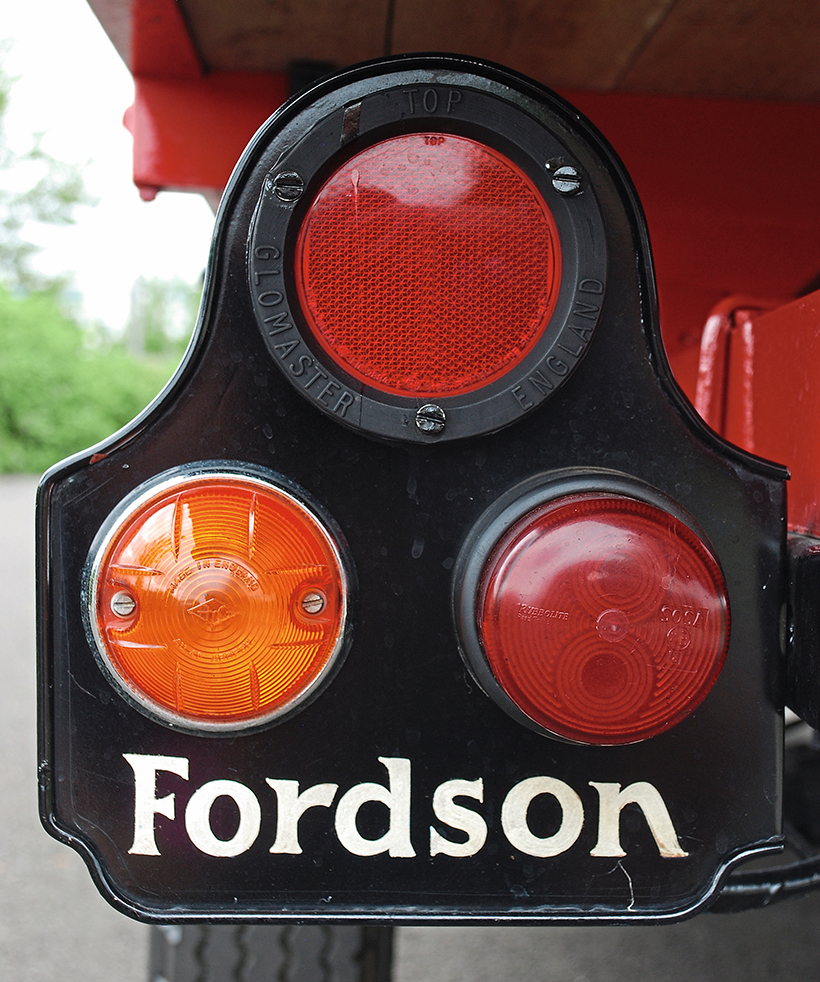
Rear lights. The direction indicators are a later addition, but look 100% original.
He then got friends Dave Peacock to do the lining and sign-writing, and Billy Stevens to make the wooden fruit that now adorns the side of the truck. The finishing touch was an original Geest banana box in the back.
In all, it only took three months to restore it to the condition you see here. This started as a £10 bet, when someone said to John that he wouldn’t get it finished in four months so, to prove them wrong (and win the bet), he did it in three!
Perhaps this is just as well, as John has another six lorries to restore, including a 1928 Dennis, a 1966 12-ton lorry, a 1996 Bedford TK horsebox and another Fordson E83W pick-up that he plans to turn into a salad bar. And he’s aiming to get them all done by next year.
So, what is the Fordson like out on the road? “It’s happy at 29-30mph – but no more!” laughs John. “The brakes are OK from that speed.”
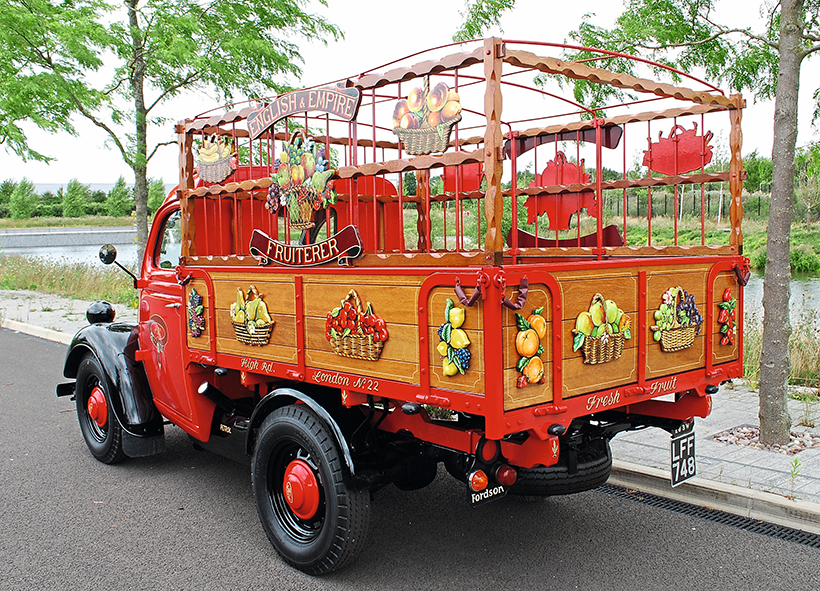
From the rear, and every inch a classic, London market fruit truck. John still sometimes takes the vehicle to the family’s stall at Wood Green market.
The truck is still used for advertising, and John sometimes takes it down to the stall in Wood Green. “I also take it to as many shows as possible – before Covid, around one or two a week,” John tells me. “I’ve done 84 shows and won a prize at 73 of them! I also show horses, and the family always comes along.”
So this Fordson really is a family affair, and provides happy memories of John’s father from childhood. This is one vehicle that he will never sell.
This feature comes from a recent issue of Classic & Vintage Commercials, and you can get a money-saving subscription to this magazine simply by clicking HERE

Previous Post
The latest diecast and resin models of classics to collect
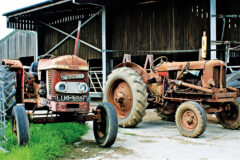
Next Post
Tamar Vintage Tractors; a vintage and classic tractor sales specialist



